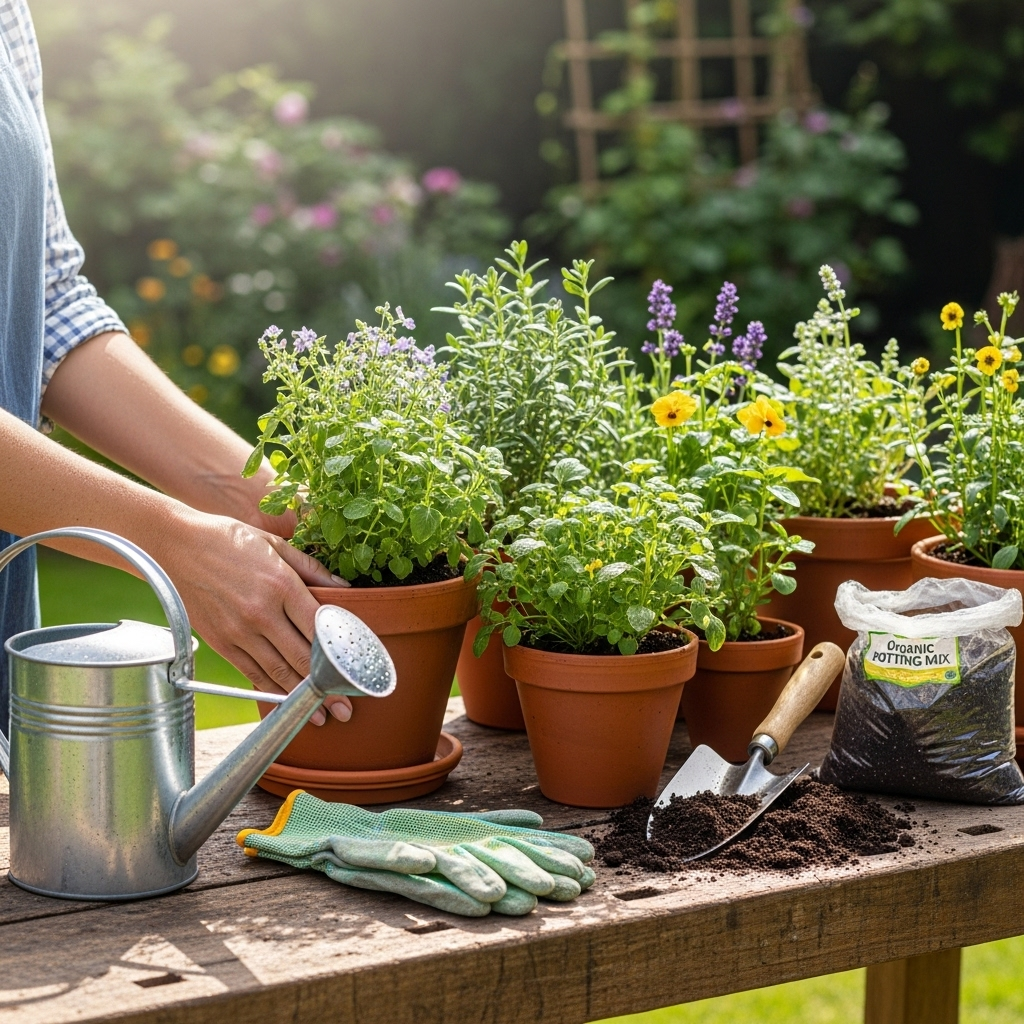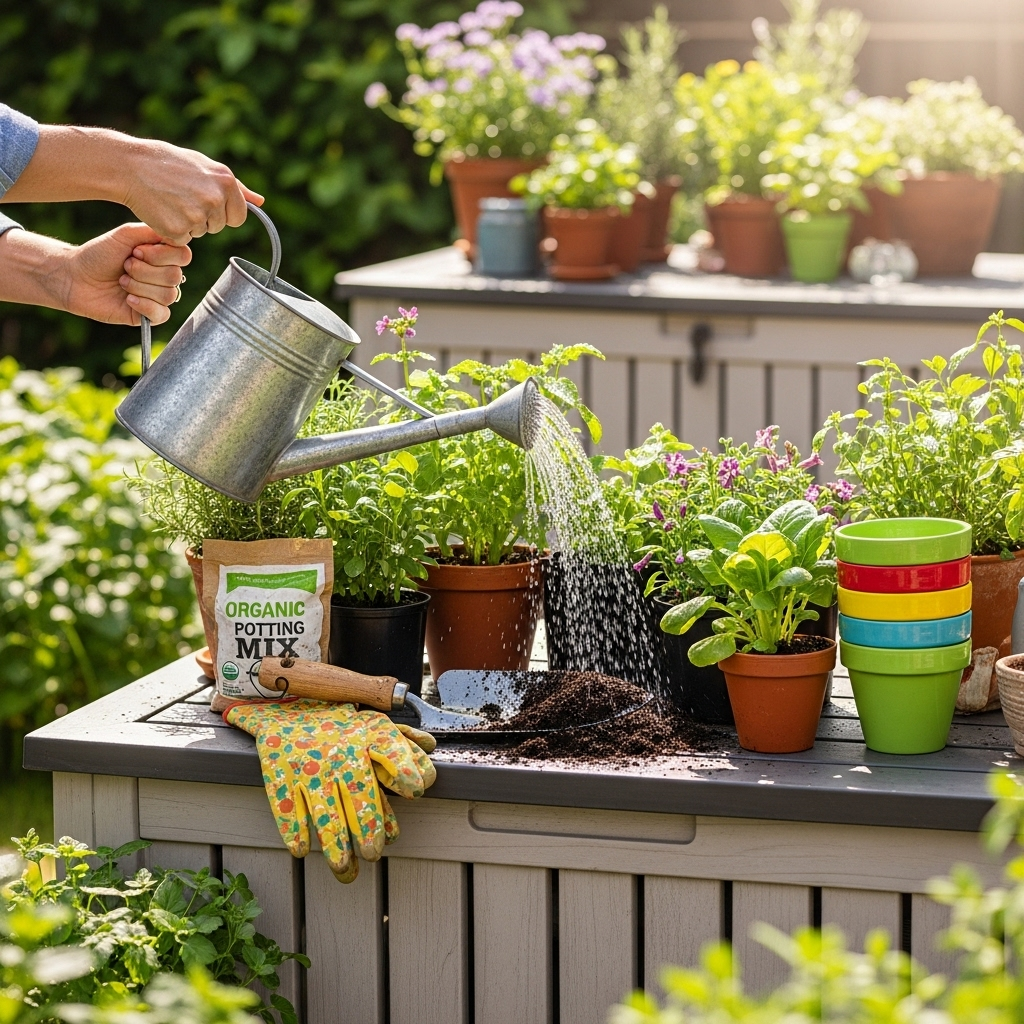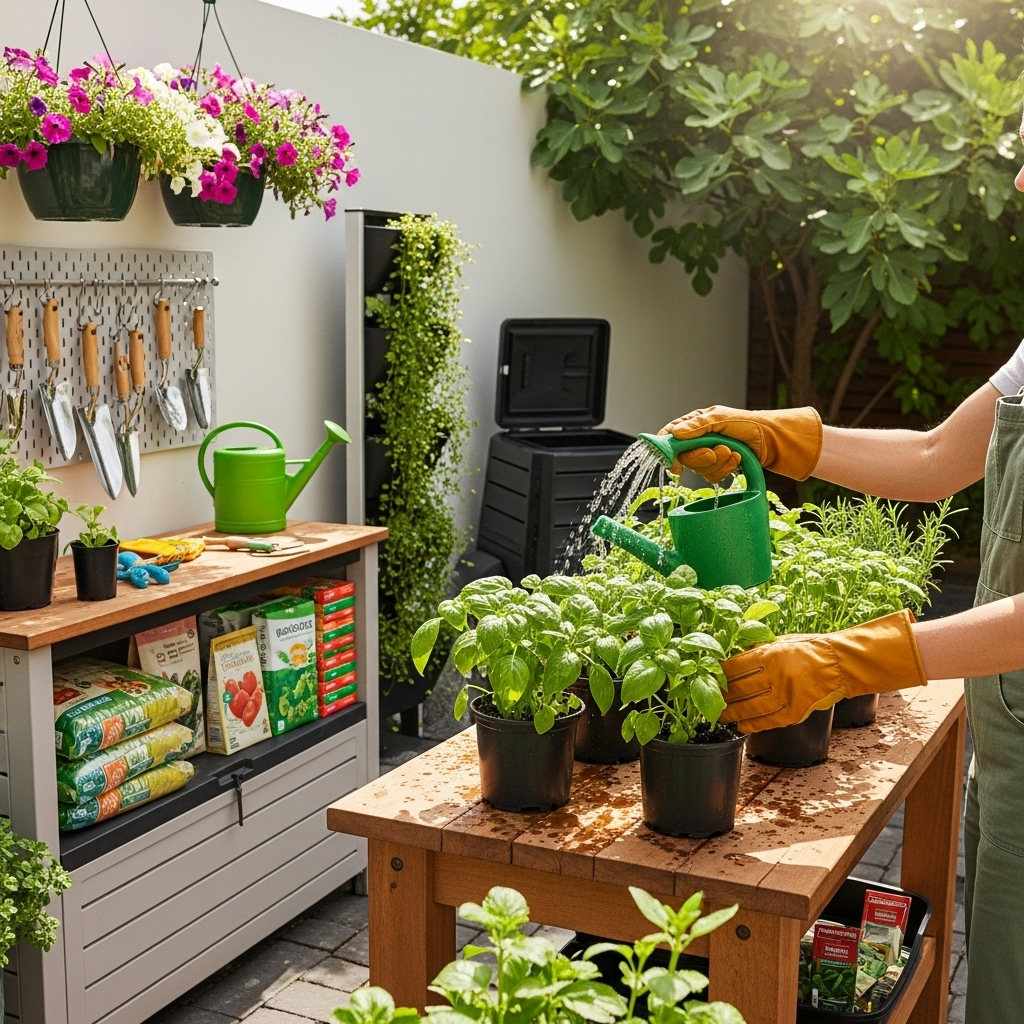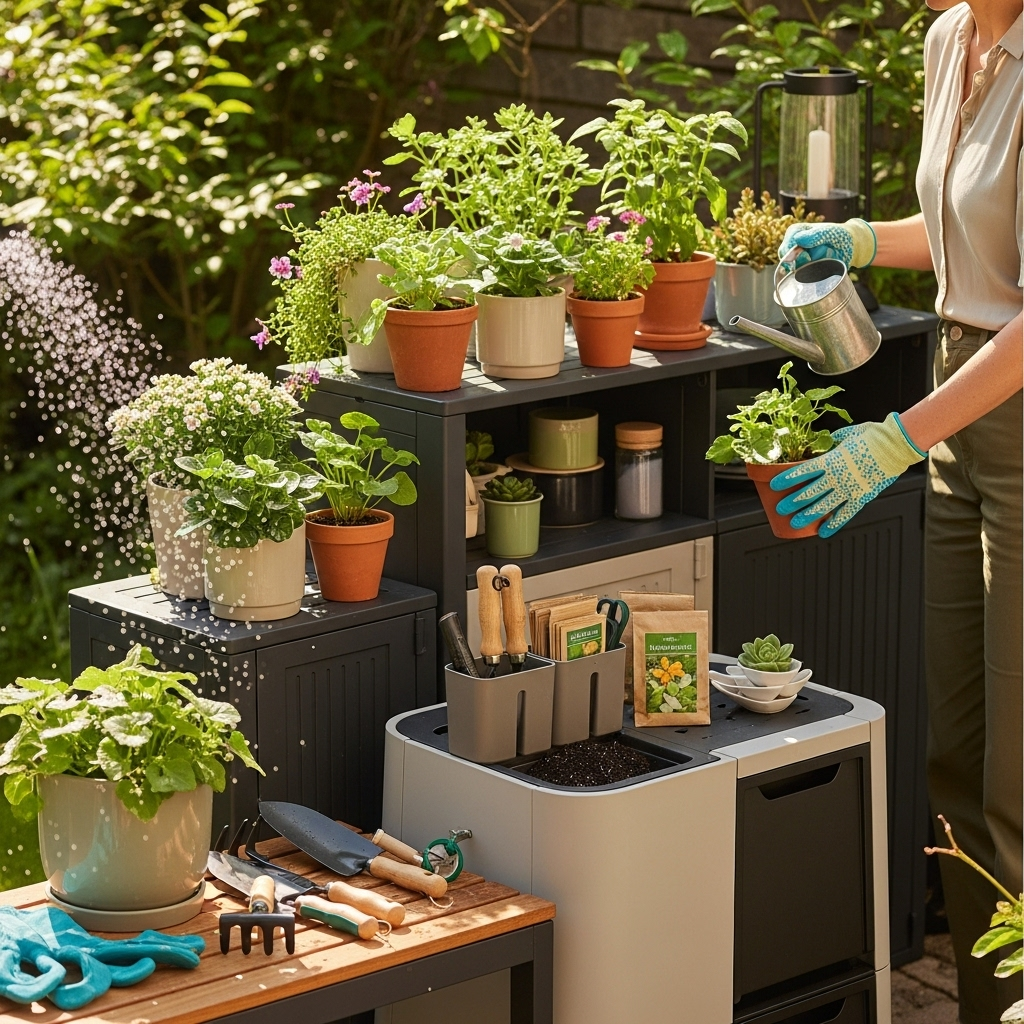Need smart ways to store your outdoor gear and gardening tools? This guide offers genius, space-saving, and weather-resistant storage solutions for any yard, making your outdoor life easier and more organized.
Does your garden shed feel like a messy jumble of tools, pots, and forgotten projects? Or maybe your patio is overflowing with cushions, toys, and equipment? It’s a common gardening challenge! Keeping outdoor items tidy and protected from the elements can feel overwhelming, but it doesn’t have to be. With a few clever ideas and some simple strategies, you can transform that chaos into calm, beautiful order. We’ll walk through practical, budget-friendly, and even eco-friendly ways to tackle your outdoor storage woes. Get ready to reclaim your space and make your outdoor living enjoyable again!
Why Smart Outdoor Storage Matters
Outdoor storage isn’t just about decluttering; it’s about protecting your investments and making your outdoor life smoother. Imagine this: the sun is shining, you’re ready to relax or garden, but you can’t find your favorite trowel, or the cushions you wanted to use are damp and mildewy from sitting out. Frustrating, right?
Good storage solutions do more than just hide things away. They:
- Protect your gear: Tools last longer when stored properly, shielded from rain, snow, and intense sun.
- Save you time: When everything has a place, you spend less time searching and more time doing what you love.
- Enhance safety: Tripping hazards from scattered items are eliminated.
- Improve aesthetics: A well-organized outdoor space is simply more pleasant to look at and use.
- Extend the life of items: Patio furniture, cushions, gardening supplies, and even kids’ toys can last much longer when not exposed to harsh weather.
Let’s dive into some genius strategies to get your outdoor space in tip-top shape!
Choosing the Right Outdoor Storage Solution

The “best” storage isn’t one-size-fits-all. It depends on what you need to store, how much space you have, your budget, and your personal style. Here’s a breakdown of common options:
1. Storage Benches: Double Duty Delight
Why use valuable floor space for just storage when you can have seating and storage? Storage benches are wonderful for patios, decks, or even at the end of a garden path. They’re perfect for stashing away gardening gloves, small tools, kneeling pads, watering cans, or even kids’ outdoor toys.
Pros:
- Multifunctional: Provides seating and storage.
- Space-saving: Combines two needs into one item.
- Can enhance your outdoor decor.
Cons:
- Can be expensive depending on the material and size.
- May not be fully waterproof; lining is sometimes recommended for sensitive items.
- Limited capacity compared to larger units.
Materials to Consider:
- Resin/Plastic: Durable, weather-resistant, and relatively low maintenance.
- Wood: Offers a beautiful, natural look but requires more maintenance (sealing, painting) to prevent rot and weathering.
- Metal: Strong and durable, but can rust if not properly treated and may get very hot in direct sun.
2. Deck Boxes: The All-Rounder
Deck boxes are a cornerstone of outdoor storage for a reason. They come in various sizes, from compact options to large ones that can hold a substantial amount of gear. They are excellent for cushions, pool toys, gardening supplies, and even bicycles if large enough.
Choosing a Deck Box – What to Look For:
- Weather Resistance: Look for UV-resistant and waterproof materials. Many have sealed lids to keep moisture out.
- Venting: Some boxes have vents to prevent mold and mildew growth inside, especially if storing fabric items.
- Lockable Lids: For security, consider a box with a lockable lid.
- Ease of Assembly: Some come fully assembled, while others require simple DIY.
- Lifting Mechanism: Gas shocks or slow-close hinges make opening and closing much safer and easier, especially for heavy lids.
Popular Uses:
- Patio furniture cushions
- Pool and spa accessories
- Gardening tools and supplies
- Outdoor game equipment
- Recycling bins (if aesthetics are a concern)
3. Sheds & Garages: The Ultimate Storage Hub
For the serious gardener or homeowner with lots of equipment, a shed or garage is often the go-to solution. These offer the most space and can house everything from ride-on mowers and wheelbarrows to long-handled tools, potting soil, and seasonal decorations.
Types of Sheds:
- Plastic/Resin Sheds: Lightweight, often easy to assemble, and highly weather-resistant with minimal maintenance. Can sometimes be less aesthetically pleasing than wood.
- Metal Sheds: Very durable and secure, but can be prone to rust or dents depending on the quality. Offer excellent fire resistance.
- Wooden Sheds: Classic and attractive, offering a rustic charm. They require regular maintenance (painting, sealing) to protect against moisture and insects.
- Prefabricated Kits: Available in various materials, these kits can range from simple structures to elaborate workshops.
DIY Shed Options:
If you’re handy, building your own shed can be a rewarding project. This allows you complete control over size, design, and materials. Resources like those from the Federal Highway Administration (while about bridge design, offer insights into durable construction principles applicable to outdoor structures) can inspire robust building techniques.
4. Wall-Mounted Storage & Shelving: Go Vertical!
Don’t let your walls go to waste! Vertical storage is a game-changer for smaller spaces or for organizing within a larger shed or garage.
Clever Wall Solutions:
- Tool Racks: Perfect for hanging long-handled tools like rakes, shovels, and hoes.
- Pegboards: Excellent for organizing smaller hand tools, gloves, or even seed packets. You can add hooks, shelves, and baskets.
- Wall-Mounted Cabinets: Keep smaller items protected from the elements and out of sight.
- Hooks and Brackets: Simple, versatile, and affordable for hanging almost anything.
These systems help keep your floor clear, making it easier to move around and clean your space.
5. Stackable Containers & Totes: The Flexible Friend
For smaller items, seasonal decorations, or overflow from larger storage, stackable containers are essential. Look for ones specifically designed for outdoor use, made from durable plastic that won’t become brittle in the cold or warp in the heat.
Tips for Using Stackable Containers:
- Label Everything: This is crucial! Save yourself time and frustration by clearly labeling the contents of each bin.
- Group Similar Items: Store all your potting soil and fertilizer in one set of bins, seasonal decor in another, etc.
- Consider Clear vs. Opaque: Clear containers let you see the contents at a glance, while opaque ones offer protection from light and a tidier look.
- Invest in Quality: Cheaper plastic bins can crack easily. Look for sturdy, UV-resistant options.
Genius Storage Hacks & DIY Ideas
Sometimes, the most brilliant solutions are the ones you create yourself or adapt from everyday items!
DIY Compost Bin:
Composting is an eco-conscious gardener’s best friend! You can build a simple bin from pallets. It’s a fantastic way to use kitchen scraps and yard waste to create nutrient-rich soil for your garden. Many local government and environmental sites, like those from university extension offices (e.g., UC Master Gardener Program of San Mateo & San Francisco Counties), offer excellent guides on effective composting and building bins.
Pallet Garden Tool Organizer:
An old wooden pallet can be repurposed into a free-standing tool organizer. Stand it upright, secure it, and use the slats to hang long-handled tools. You can even add small shelves or buckets to hold smaller items.
PVC Pipe Tool Holders:
Cut lengths of PVC pipe and mount them to a wall or fence. They make excellent holders for shovels, rakes, brooms, and even fishing rods if you’re a keen angler!
Repurposed Cans & Jars:
Cleaned-out coffee cans, paint cans, or large glass jars can be used to store nails, screws, plant tags, or small hand tools. Paint them to match your garden decor for a cohesive look.
Hose Reel Cabinet:
If you’re tired of a tangled hose, build or buy a decorative cabinet that encloses your hose reel. This keeps it neat, protected, and off the ground.
Storage for Specific Outdoor Items

Let’s get specific. What’s the best way to store common outdoor items?
Patio Furniture Cushions
Cushions are prone to mildew and fading. The best storage is in a cool, dry place. High-quality deck boxes with good seals are ideal. If you don’t have a deck box, consider breathable cushion bags stored in a shed or garage. Always ensure cushions are completely dry before storing.
Gardening Tools
Hand Tools: Trowels, cultivators, and hand pruners can be kept in a dedicated tote, a pegboard with hooks in a shed, or even a large, repurposed metal can by your back door.
Long-Handled Tools: Rakes, shovels, hoes, and spades should be hung vertically on wall-mounted racks in a shed or garage. This prevents them from falling and keeps them organized.
Power Tools: Electric or battery-powered tools need dry, protected storage, ideally in their original cases or in a dedicated, secure cabinet.
Soil & Fertilizers: Store bags of soil and fertilizer in a dry location, off the ground if possible, to prevent moisture absorption. Larger, sealed bins are great for this.
Kids’ Outdoor Toys
Toy chests, large deck boxes, or even repurposed plastic storage bins can work wonders. Ensure the bins are easy for kids to access (with supervision for safety) so they can help with cleanup. Consider placing a bin near the play area.
Grill & Accessories
If you have a grill cover, use it! For extra protection, consider storing your grill in a designated outdoor storage cabinet or a shed during the off-season. Propane tanks should always be stored upright in a well-ventilated area, away from ignition sources. Resources on propane safety, often available from fire departments or gas suppliers, are invaluable.
Pots & Planters
Empty terra cotta pots can be nested together and stored in a shed or garage to prevent cracking in freezing temperatures. Plastic pots are more durable but can still benefit from organized storage on shelves to keep them tidy.
Organizing Your Storage Space: The Final Touches
Once you have your storage units, the real magic happens when you organize them effectively.
Zone Your Space
Divide your shed, garage, or storage area into zones: gardening, play, maintenance, seasonal, etc. This makes finding things much easier.
Utilize Every Inch
Think overhead! Shelving units, ceiling-mounted storage racks, and wall organizers maximize space. Even the back of a shed door can hold small shelves or hooks.
Invest in Good Lighting
A well-lit storage area makes a huge difference. You’ll be able to see what you have and find items quickly. Battery-operated LED lights are a great, easy option for sheds.
Maintain Regularly
A quick tidy-up every few months can prevent clutter from piling up again. Take a few minutes to put things back in their designated spots.
Eco-Friendly Storage Considerations

As an eco-living enthusiast, I love finding ways to be kind to our planet while organizing!
- Repurpose and Reuse: Before buying new, see what you have. Old crates, buckets, or even sturdy cardboard boxes (lined for protection) can be adapted.
- Choose Durable Materials: Investing in high-quality, long-lasting storage means less replacement over time, which is more sustainable.
- Natural Materials: Opt for wood from sustainable sources (look for FSC certification) or recycled plastic products where possible.
- DIY Smart: Building your own storage from reclaimed materials is a fantastic eco-win!
Frequently Asked Questions About Outdoor Storage
Q1: What’s the best material for outdoor storage bins?
A1: For general outdoor use, UV-resistant, waterproof resin or plastic is usually best. It holds up well against the elements and requires little maintenance. For wood, ensure it’s treated for outdoor use and consider regular sealing.
Q2: How can I prevent mildew in my outdoor storage?
A2: Ensure items are completely dry before storing. Use breathable storage bags for cushions. If using a deck box or shed, consider adding ventilation or placing moisture-absorbing packets inside, especially in humid climates.
Q3: Can I store garden soil outside?
A3: Yes, but it’s best to store it in a dry location, off the ground, and protected from moisture. Sealed plastic bins or a dry shed/garage are ideal to prevent it from getting waterlogged and clumping.
Q4: My shed is small. How can I maximize storage?
A4: Go vertical! Use wall-mounted racks for tools, install shelving units, and use pegboards for smaller items. Ceiling-mounted storage can also be very effective for lightweight, seasonal items.
Q5: How often should I clean my outdoor storage containers?
A5: It’s a good idea to give them a quick wipe-down annually, perhaps in spring before the main outdoor season begins, or in fall before storing seasonal items. This helps prevent mold and keeps things fresh.
Q6: What’s the best way to store garden hoses?
A6: A hose reel is ideal for keeping hoses neat and preventing kinks. You can mount these on a wall, or many outdoor storage cabinets are designed to house them. Alternatively, coiled hoses can be hung on sturdy wall hooks.
Conclusion

Creating effective outdoor storage is a journey, not a destination. By choosing the right solutions – whether it’s a sturdy deck box, a practical shed, or clever DIY hacks – you invest in the longevity of your belongings and the enjoyment of your outdoor space. Remember, the goal is to make your life easier, your garden more functional, and your yard a more beautiful and organized sanctuary. Don’t be afraid to experiment with different methods to find what works best for you and your unique needs. Happy organizing, and here’s to a clutter-free outdoor adventure!
